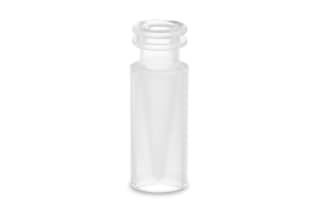
|
Certified |
Not Certified |
|
Closure Type |
Snap Neck |
|
Dimensions |
12 x 32 mm |
|
Format |
Regular |
|
Material |
Polypropylene |
|
Volume Capacity |
300 |
|
Type |
Autosampler vial |
|
Includes |
Vial |
|
Sample Limited |
Sample Limited |
|
UNSPSC |
41121806 |
|
Application |
Sample Preparation |
|
Product Type |
Vials |
|
Units per Package |
100 pk |

FAQs about Polypropylene 12 x 32 mm Snap-Neck Vial, 300 μL Volume, 100 pk
What is the volume capacity of the polypropylene snap-neck vial?
The polypropylene snap-neck vial has a volume capacity of 300 μL.
Can these vials be used for both liquid and solid sample storage?
Yes, these vials are suitable for both liquid and solid sample storage.
Are these vials compatible with automated sample handling systems?
Yes, these vials are designed to be compatible with most automated sample handling systems, ensuring seamless integration into laboratory workflows.
What is the recommended temperature range for storing samples in these vials?
These vials are recommended for use within a temperature range of -40°C to 100°C, making them suitable for a wide range of applications.
Do these vials come pre-sterilized?
No, these vials are not pre-sterilized. However, they can be easily sterilized using common laboratory sterilization methods such as autoclaving or chemical sterilization.